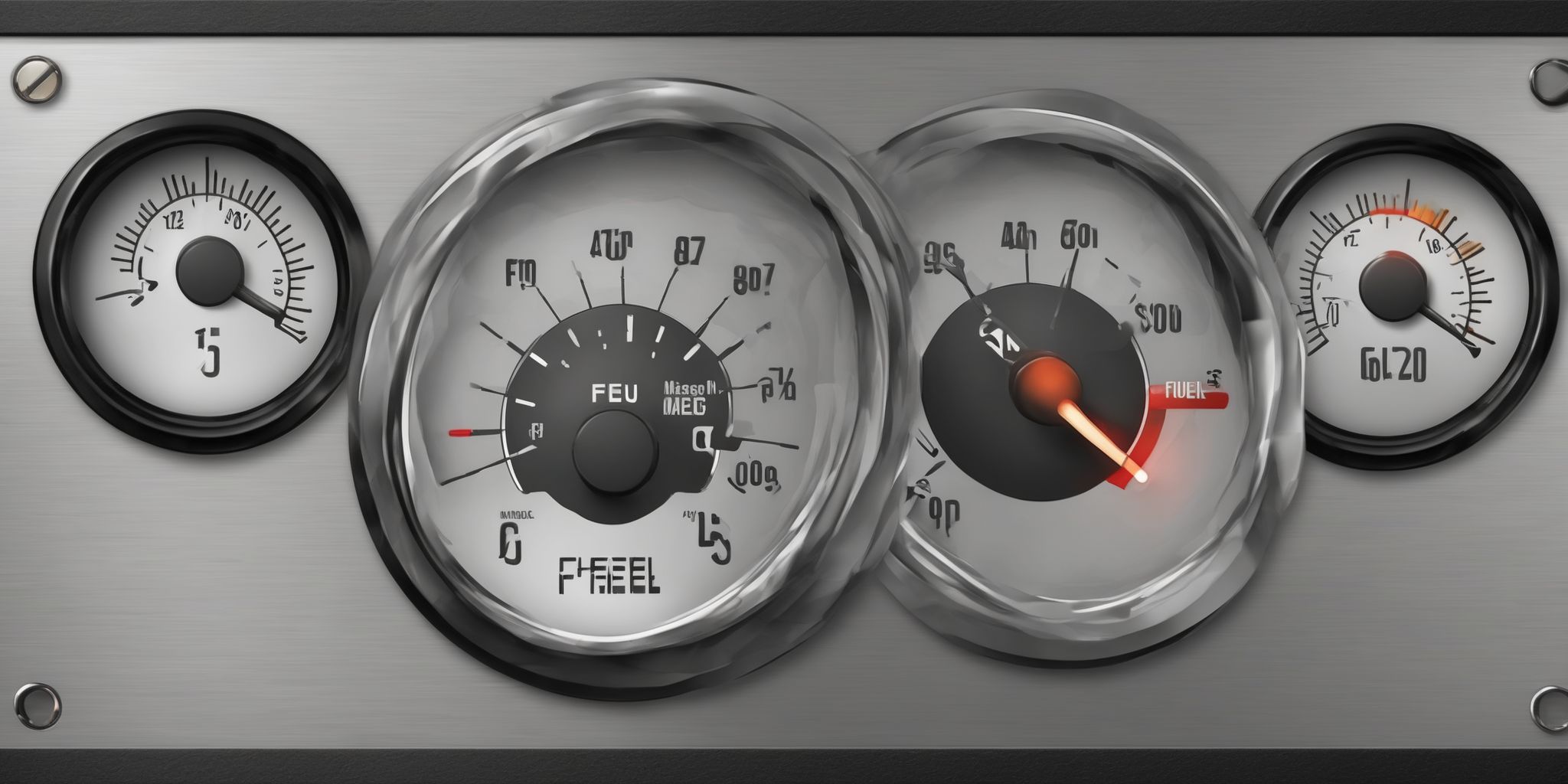Understanding Mortgages Offset: A Guide to Saving Money on Interest
Are you tired of spending a chunk of your hard-earned money on hefty interest payments? Wish there was a way to reduce the amount you owe while still enjoying the comforts of owning a home? Well, we've got great news for you! Enter the world of mortgages offset, a nifty little trick that can help you save a significant amount on interest without breaking a sweat.
In this guide, we'll unravel the mystery behind mortgages offset and show you how this smart financial strategy can put more money back into your pocket. So, buckle up and get ready to dive into the wonderful world of saving money on interest. Let's get started!
Understanding Mortgages Offset: A Guide to Saving Money on Interest
Mortgages offset is a strategy that allows borrowers to reduce the amount of interest they pay on their home loans. By linking a savings or transaction account to their mortgage, the balance in that account is offset against the outstanding loan balance, reducing the interest charged. This can result in significant interest savings over the life of the loan.
For example, if you have a mortgage of $200,000 and a linked savings account with a balance of $50,000, you would only be charged interest on the remaining $150,000. The higher the balance in the offset account, the greater the potential savings.
By understanding mortgages offset, borrowers can effectively minimize their interest costs and pay off their mortgages faster. It is important to compare different lenders and types of offset accounts to find the best option for your needs.
What is Mortgages Offset?
Explaining the concept of Mortgages Offset
Mortgages Offset is a financial strategy that allows homeowners to reduce the amount of interest paid on their mortgage. It involves linking a savings or transaction account to the mortgage, with the balance in the account being offset against the outstanding loan amount. This means that the interest is only calculated on the remaining balance, resulting in potential savings over the life of the loan.
For example, if a mortgage of $200,000 has an offset account with a balance of $50,000, the interest is only charged on $150,000. By utilizing Mortgages Offset, homeowners have the opportunity to save money on interest payments and potentially pay off their mortgage faster.
How Mortgages Offset works
Mortgages Offset works by linking your mortgage account to a savings or transaction account. The money in the linked account is "offset" against your outstanding mortgage balance, reducing the amount on which you pay interest.
For example, if you have a mortgage balance of $200,000 and $50,000 in your linked account, you will only be charged interest on $150,000. This can lead to significant interest savings over time. It gives you the flexibility to use your savings when needed, while still reducing your mortgage interest. By keeping a higher balance in your linked account, you can maximize the interest savings.
Benefits of Mortgages Offset
Reduced interest payments
Reduced interest payments are a significant advantage of Mortgages Offset. By offsetting your savings against the mortgage balance, you effectively lower the amount of interest charged on your loan. The more money you have in your offset account, the less interest you'll pay over time.
For example, if you have a mortgage of $200,000 and $50,000 in your offset account, you will only pay interest on the remaining $150,000. This can result in substantial savings and accelerate the repayment of your mortgage. It's a practical way to minimize interest costs and save money in the long run.
Faster mortgage repayment
- Mortgages Offset can help accelerate the repayment of your mortgage.
- By keeping a higher balance in your offset account, you reduce the outstanding principal amount on which interest is calculated.
- This means that a larger portion of your mortgage payment goes towards paying off the principal rather than interest.
- Over time, this can significantly reduce the term of your mortgage and save you thousands of dollars in interest payments.
- For example, if you have a $300,000 mortgage and maintain a $50,000 balance in your offset account, you effectively only pay interest on $250,000, allowing you to pay off the loan faster.
- Consider regularly depositing any extra income or unexpected windfalls into your offset account to further expedite your mortgage repayment.
Different Types of Mortgages Offset
Full offset accounts
Full offset accounts are a type of mortgages offset that allow borrowers to link their mortgage and savings accounts. By doing so, the money in the savings account is offset against the outstanding mortgage balance, resulting in reduced interest payments.
For example, if the mortgage is $200,000 and the linked savings account has $50,000, interest will only be charged on the remaining $150,000. This can lead to significant savings over the life of the loan. Full offset accounts provide the flexibility to deposit and withdraw funds without penalty or affecting interest calculations. It's important to compare different lenders to find the best full offset account that suits your needs.
Explanation and benefits
Explanation and benefits of Mortgages Offset:
- Mortgages Offset is a strategy that allows homeowners to use their savings to offset the interest on their mortgage.
- By depositing money into an offset account linked to their mortgage, borrowers can reduce the amount of interest they have to pay.
- The interest on the mortgage is calculated based on the difference between the outstanding loan balance and the funds in the offset account.
- The benefits of Mortgages Offset include:
- Interest savings: The more money held in the offset account, the less interest the homeowner will have to pay on their mortgage.
- Faster mortgage repayment: By reducing the interest charged, homeowners can potentially pay off their mortgage faster than with a traditional mortgage.
- It is important to research and compare different mortgages offset providers to find the best option that suits individual financial goals and offers competitive interest rates and fees.
Partial offset accounts
Partial offset accounts are another type of Mortgages Offset that can help you save on interest payments. With a partial offset account, you link a separate savings or transaction account to your mortgage. The balance in this account is partially offset against your mortgage balance, reducing the interest you pay.
For example, if you have a mortgage of $200,000 and a linked savings account with a balance of $50,000, you would only pay interest on $150,000. This can result in significant interest savings over the life of your mortgage. Consider using a partial offset account if you have excess funds that you want to keep accessible while still reducing your interest payments.
Explanation and benefits
Explanation and benefits of Mortgages Offset:
Mortgages Offset is a strategy that allows homeowners to save on interest by using their savings or deposit to offset the outstanding balance on their mortgage. With a full offset account, the savings balance is subtracted from the mortgage balance when calculating interest, reducing the amount on which interest is charged. This can lead to substantial interest savings over the life of the loan.
Additionally, partial offset accounts offer a similar benefit by only offsetting a portion of the mortgage balance. By effectively utilizing Mortgages Offset, homeowners can potentially pay off their mortgage faster and save thousands of dollars in interest payments.
Calculating Potential Savings
Factors to consider
Factors to consider when implementing Mortgages Offset include the interest rate differential between your mortgage and offset account, any fees associated with the offset account, and your ability to maintain a positive offset balance. A higher interest rate differential can result in greater interest savings, while lower fees can increase the overall benefits of the offset strategy.
Additionally, ensuring that you have sufficient funds to offset against your mortgage can maximize the savings. By considering these factors and comparing different mortgage options, you can make an informed decision and potentially save a significant amount of money on interest over the life of your mortgage.
Example calculations
Example calculations help illustrate the potential savings of Mortgages Offset. Let's consider a scenario where you have a mortgage balance of $200,000 with an interest rate of 4%. With a full offset account, if you have $50,000 in savings, the interest will only be calculated on the remaining balance of $150,000. This means you could save thousands of dollars in interest over the life of your mortgage.
Similarly, in a partial offset account, let's say you have $30,000 in savings, the interest will be calculated on $170,000. These calculations underline the considerable impact Mortgages Offset can have on reducing interest payments and accelerating mortgage repayment.
Finding the Best Mortgages Offset
Researching different mortgage lenders
When researching different mortgage lenders for Mortgages Offset, it's important to compare interest rates and fees. Look for lenders that offer competitive rates and low fees, as this can potentially save you significant money in the long run.
Additionally, consider the reputation and customer service of the lenders. Reading reviews or seeking recommendations from friends and family can help you identify reliable lenders. Remember, thorough research can help you find a lender that suits your specific needs and offers the best benefits for Mortgages Offset.
Comparing interest rates and fees
Comparing interest rates and fees is crucial when considering Mortgages Offset options. Here's how to approach the comparison effectively:
- Look for competitive interest rates: Low rates can save you thousands in interest over the life of your mortgage.
- Consider ongoing fees: Some lenders may charge annual or monthly account fees, impacting your overall savings.
- Factor in any introductory offers: Be aware of any limited-time promotions, as the rates and fees could change after the initial period.
- Don't forget to assess the loan features: While interest rates and fees are important, also consider other features like flexibility in making additional repayments or redraw facilities.
By researching different lenders and considering these factors, you can find a Mortgages Offset option that suits your financial goals.
Seeking professional advice
Seeking professional advice when exploring Mortgages Offset options can provide valuable insights and optimize your savings. Mortgage specialists have in-depth knowledge of the market and can help you navigate through the various lenders and products available. They can offer personalized guidance based on your financial goals and circumstances. By consulting with professionals, you can gain a better understanding of the potential benefits and risks associated with Mortgages Offset.
Implementing Mortgages Offset Effectively
Maintaining a healthy offset balance
Maintaining a healthy offset balance is important for maximizing the benefits of a mortgage offset account. By regularly depositing funds into the offset account, borrowers can reduce the amount of interest charged on their mortgage. It is advisable to transfer any surplus income or savings into the offset account to offset the principal amount.
Additionally, minimizing unnecessary withdrawals from the offset account helps to maintain a higher balance, resulting in greater interest savings over time.
For example, consider depositing any tax refunds, bonuses, or extra income into the offset account to make the most of the offset facility.
Optimizing your offset savings
Optimizing your offset savings is a smart strategy to make the most of your mortgage. Start by regularly reviewing your offset account balance and paying attention to any fluctuations. Consider directing any extra funds towards your offset account to reduce the interest charged on your mortgage. Another tip is to keep your everyday expenses and income in the offset account to maximize offset savings.
By minimizing the time your money sits in a non-offset account, you can maximize the interest savings. Lastly, consider setting up automatic payments to ensure consistent contributions to your offset account. These simple steps can help you optimize your offset savings and ultimately save more on interest over the life of your mortgage.
Final thoughts
Mortgage offset accounts can help you save money on interest payments by reducing the amount of interest charged on your loan. This guide explains how offset accounts work, the benefits they offer, and how you can use them to your advantage. By linking your offset account to your mortgage, the balance in your account is offset against your loan balance, resulting in a reduced interest amount. This can potentially save you thousands of dollars over the life of your mortgage.
Understanding mortgage offset accounts can empower you to make informed decisions and maximize your savings.


